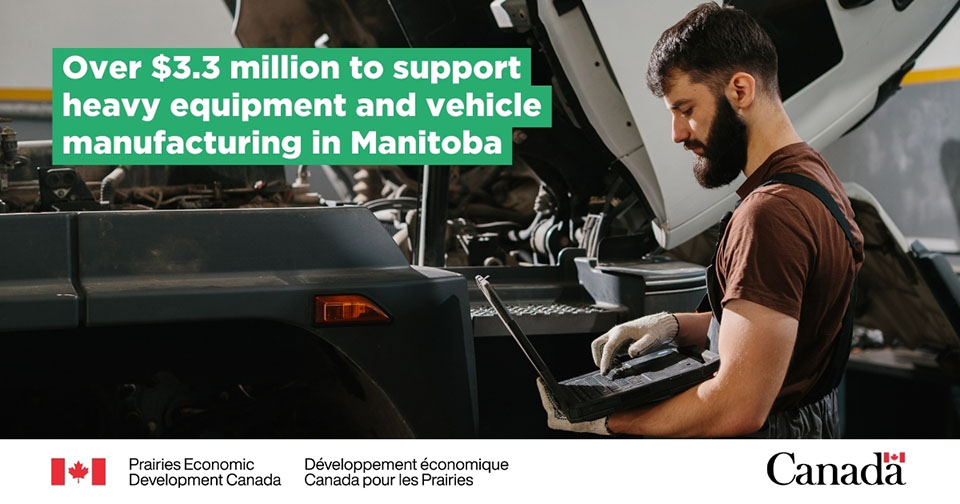Backgrounder
Canada’s strategic actions to reduce methane emissions over the last decade have led to significant reductions in methane emissions from oil and gas sectors while supporting Canada’s climate competitiveness in global energy markets.
Enhanced Oil and Gas Methane Regulations
Reducing methane emissions is one of the most cost-effective ways to fight climate change and protect the environment and the air we breathe. Canada’s strategic actions to reduce methane emissions over the last decade have led to significant reductions in methane emissions from oil and gas sectors while supporting Canada’s climate competitiveness in global energy markets. These efforts have supported job opportunities for Canadian workers and communities while attracting investments in emerging made-in-Canada clean technologies. Taking action on methane helps position Canada as an attractive and responsible global energy supplier as investors, insurers, and markets increasingly value good methane performance.
Innovative and affordable methane abatement solutions from Canada’s clean tech sector and its workers are readily available today and will enable the oil and gas sector to reduce methane emissions while providing good jobs.
The publication of the final Enhanced Methane Regulations in December 2025 follows extensive consultation and engagement with provinces, industry, experts, workers, Indigenous peoples, and other interested stakeholders. In the coming months, Environment and Climate Change Canada will lead further discussions to develop guidance documents to support the regulations’ implementation. Canada has successfully entered into equivalency agreements on methane in oil and gas with British Columbia, Alberta, and Saskatchewan since 2020. Moving forward, Canada will work to advance new equivalency agreements with interested jurisdictions, including Alberta, as outlined in the November 27, 2025, Canada–Alberta Memorandum of Understanding.
Key details
These regulations are formally known as The Regulations Amending the Regulations Respecting Reduction in the Release of Methane and Certain Volatile Organic Compounds (Upstream Oil and Gas Sector).
In 2018, Canada became one of the first countries to put in place regulations to reduce methane emissions from oil and gas for both new and existing facilities. Since then, they have reduced methane emissions while Canadian oil production grew by approximately 10% and gas production grew by approximately 11%. Oil and gas extraction revenues increased by 72% from 2018–2024. Federal emissions data shows that Canada is on track to achieve the 2018 regulations’ target of 40–45% methane reduction with equivalency agreements in place.
The Enhanced Methane Regulations expand the coverage and stringency of the 2018 methane regulations, leading to further reduction of oil and gas methane emissions. The Enhanced Methane Regulations are designed to protect the environment and human health from the threat of climate change by significantly reducing this potent greenhouse gas. They also support innovation, leading to increased adoption of new technologies like continuous monitoring systems to monitor methane releases.
The Enhanced Methane Regulations demonstrate to other oil- and gas-producing nations that cost-effective and substantial methane emission reductions are possible. As the world’s fifth largest natural gas producer and fourth largest oil producer and the co-convener of the Global Methane Pledge, Canada can lead the way toward stronger global action to reduce this dangerous greenhouse gas.
Costs associated with the Enhanced Methane Regulations are not expected to be passed through to households and small businesses, as oil and gas prices are generally set by global and regional markets.
New federal requirements to reduce methane
The Enhanced Methane Regulations applies to upstream production, processing, and transmission facilities in Canada’s onshore oil and gas sector. This includes centralized production sites, well sites, gas plants, and pipelines. They do not apply to the offshore oil and gas industry or downstream sites.
Figure 1: Oil and Gas Sector
Long description
| Facility type |
Covered by Enhanced Methane Regulations |
| Offshore oil production |
No |
| Gas production |
Yes |
| Oil production |
Yes |
| Oil refinery |
No |
| Gas processing plant |
Yes |
| Fuel terminal |
No |
| Transmission facility |
Yes |
| Liquified natural gas facility |
Yes |
| Municipal gas distribution |
No |
The Enhanced Methane Regulations expand the coverage and stringency of the 2018 methane regulations and focuses on maximizing practical and cost-effective emissions reductions within the oil and gas sector. One key change from the 2018 methane regulations is that the Enhanced Methane Regulations provide oil and gas operators with two compliance pathways:
- The first option requires specific work practices to prohibit venting, with several exceptions, and establishes an inspection schedule to find leaks and repair them.
- The second option allows operators to design their own approaches to controlling methane on the condition that they meet, at a facility level, methane intensity thresholds that are on par with standards from leading international voluntary certification programs. This pathway allows operators more flexibility to implement methane reduction solutions and is contingent on operators undertaking robust methane monitoring.
The regulations will be phased in starting on January 1, 2028, and will spur investments to reduce methane emissions that will help position the Canadian oil and gas industry amongst top performers for producing low-methane intensity products and supporting long-term success in a technologically advanced, decarbonizing industry.
Production forecasts under theEnhanced Methane Regulations
The Government of Canada’s macroeconomic analysis suggests that overall, the oil and gas sector is expected to see continued production growth in Canada under the Enhanced Methane Regulations. Oil and gas production is projected to grow by over 17% from 2019–2030 with the Enhanced Methane Regulations in effect. This analysis estimates a 0.2% impact on production over the 2025–2035 timeframe and estimated gross domestic product (GDP) impacts of only 0.01% over the 2025–2035 period.
Figure 2: Oil and Gas production Growth 2025-2035

Long description
| Year |
Baseline scenario |
Regulatory scenario |
| 2025 |
19,811.27 |
19,811.26 |
| 2026 |
20,192.36 |
20,192.66 |
| 2027 |
20,293.72 |
20,272.49 |
| 2028 |
20,432.13 |
20,407.98 |
| 2029 |
20,777.36 |
20,744.64 |
| 2030 |
21,099.15 |
21,022.17 |
| 2031 |
21,115.39 |
21,068.06 |
| 2032 |
21,048.91 |
20,988.55 |
| 2033 |
21,270.41 |
21,201.87 |
| 2034 |
21,448.22 |
21,365.13 |
| 2035 |
21,519.89 |
21,425.72 |
| Total 2025–2035 |
229,008.82 |
228,500.53 |
Climate, health, and economic benefits
The Enhanced Methane Regulations will deliver cumulative reductions of 304 megatonnes of carbon dioxide equivalent (Mt CO2e) from 2028–2040, as a key policy to deliver deeper emissions reductions beyond the 40–45% (from 2012) that have been achieved to date.
From 2028–2040, the Enhanced Methane Regulations are expected to cost the oil and gas sector an average cost of $48 per tonne of CO2e reduced, making this one of the lowest cost opportunities to drive significant progress on our climate goals. The Enhanced Methane Regulations also enable the diversion of methane—the main component of natural gas—from becoming a pollutant that harms human health and the environment to being an economically valuable good. It is estimated the Enhanced Methane Regulations will support the conservation of a considerable amount of natural gas (705 petajoules, which has a market value of $2 billion) through emissions reductions (abatement) approaches in these regulations. This is enough natural gas energy conserved between 2028–2040 to heat over 11 million Canadian homes for a year.
The Government of Canada estimated the net benefits of the regulations to be $23.9 billion over the 2028–2040 period from avoided climate change impacts and by cutting air pollutant emissions known as volatile organic compounds (VOCs). This will reduce health impacts for Canadians living near oil and gas activities, yielding a total estimated $257 million in health benefits. VOC emissions contribute directly to ambient concentrations of toxic substances such as benzene, fine particulate matter (PM2.5), and ground-level ozone. Reduction of harmful VOCs are expected to result in fewer premature deaths, reduce symptoms among asthmatics, and prevent crop losses due to ozone damage.
The regulations will create conditions for clean technology companies that specialize in methane reduction solutions and employ a variety of skilled labourers across Canada. Since 2018, when Canada’s first oil and gas methane regulations were finalized, this sector has grown to 136 companies in Canada. An independent estimate suggests that actions companies take to comply with the regulations would create approximately 34,000 jobs in Canada from 2027–2040.
Working with provinces
The Government of Canada recognizes the important role of provincial governments in reducing methane from their oil and gas sectors. The release of the Enhanced Methane Regulations builds on a history of federal–provincial collaboration on methane.
Under the Canadian Environmental Protection Act, equivalency is a regulatory process initiated by provinces or territories which compares federal and provincial regulations to determine whether provincial regulations meet the requirements to stand in for federal regulations. The development of an equivalency agreement requires that the provincial regime meets or exceeds federal emission reduction outcomes.
Since 2020, equivalency agreements have been in place in British Columbia, Alberta, and Saskatchewan, and these agreements have all been renewed within the past year. These agreements stand down the 2018 federal oil and gas methane regulations in favour of provincial systems that achieve similar results.
The Government looks forward to working with provinces to consider updating the equivalency agreements on the basis of the final Enhanced Methane Regulations. As noted in the Canada–Alberta Memorandum of Understanding signed in November 2025, both governments will work to finalize an equivalency agreement on oil and gas methane by April 1, 2026.
Budget 2025 committed to remove the mandatory five-year limits for equivalency agreements under the Canadian Environmental Protection Act. This could allow Environment and Climate Change Canada to adopt a longer-duration equivalency agreement with Alberta or other interested jurisdictions.
Indigenous focus
The Government of Canada’s Enhanced Methane Regulations support healthier air quality for Indigenous communities near oil and gas infrastructure, contributing to meeting Canada’s responsibilities under the United Nations Declaration on the Rights of Indigenous Peoples Act (UN Declaration). The UN Declaration, an international human rights instrument, sets out minimum standards for the survival, dignity, and well-being of Indigenous peoples. These regulations will help advance this commitment by enhancing environmental protections through the reduction of methane emissions from the upstream oil and gas sector. Indigenous partners were consulted throughout the development of the Enhanced Methane Regulations, and some welcomed the regulations as they support cleaner air in their communities.
Global actions on methane emissions
Canada’s approach is broadly aligned to major oil- and gas-producing states such as Colorado, New Mexico, and California. Currently, these states have oil and gas methane rules to eliminate routine venting and flaring, enhance leak detection and repair, and address other potentially large releases.
Globally, other oil and gas producing countries—including Nigeria, Egypt, Brazil, Mexico, and Colombia—are moving to implement methane regulations, and China recently announced its intent to develop a methane plan.
In May 2024, the European Union, the world’s largest oil and gas importer, approved new stringent import standards on natural gas to take effect in 2030. These standards will apply border penalties on new oil and gas products, including liquefied natural gas (LNG), entering the European Union with methane intensity above a threshold yet-to-be-determined.
In June 2025, Japan announced strengthened efforts to increase transparency of imported LNG emissions. South Korea is also considering similar measures and have already taken steps to improve supply chain transparency for exporting countries. Importers representing more than half of South Korea’s and Japan’s LNG imports have signed on to the CLEAN initiative, signaling they will prefer LNG produced cleanly. Asia represents an important market for Canada’s west coast LNG terminals. In June 2025, LNG Canada delivered its first cargo of LNG from Kitimat, British Columbia, to Asia, marking a major milestone in Canada’s clean energy diversification.
Significant global efforts to reduce methane emissions are underway. The first Global Methane Status Report released in November 2025 shows that although total methane emissions are still increasing, they are growing more slowly since the Global Methane Pledge was launched in 2021. The report projects a 10% slower growth rate by 2030.
The Enhanced Methane Regulations will help ensure that Canadian oil and gas are low methane, which is increasingly in demand around the world. According to the International Energy Agency, major oil and gas producers around the world have already set low methane emissions objectives. Canada’s enhanced methane regulations will bring more sector participants to the standard set by leading companies and voluntary certification programs.
Reducing methane emissions was a key topic at this year’s United Nations Climate Change Conference (COP30), where countries further raised ambitions to tackle this potent climate warming greenhouse gas. Reducing methane emissions is the “low-hanging fruit” that will slow climate change in the next decade, providing valuable time to target other sources of greenhouse gases that are harder to reduce.
Landfill Methane Regulations
The Landfill Methane Regulations apply to certain privately and municipally owned landfills that have received municipal solid waste.
When organic waste—such as food, yard waste, and paper products—is disposed in landfills, it produces methane, a powerful greenhouse gas. This process takes place over many years, which means that the methane generated in landfills today is the result of past decades of organic waste disposal. By installing landfill gas management systems, methane can be recovered before it can be emitted to the atmosphere. The recovered landfill gas is either flared (burned) or can be used to create low-carbon energy.
The Landfill Methane Regulations will reduce methane emissions from landfills through a performance-based approach that sets surface methane concentration limits and requires regular monitoring to confirm these limits are being met and identify and repair methane leaks.
The Landfill Methane Regulations apply to landfills that:
- Disposed of any quantity of municipal solid waste after January 1, 2010, and have more than 450,000 tonnes of municipal solid waste-in-place
- Disposed of more than 20,000 tonnes of municipal solid waste in 2025 or any subsequent calendar year and have more than 200,000 tonnes of municipal solid waste-in-place
The Landfill Methane Regulations do not apply to landfills or distinct portions of a landfill that are under final cover and ceased to accept waste before January 1, 2010, or to landfills that have received only the following types of waste:
- Hazardous waste
- Non-biodegradable waste
- Waste produced from forest products operations
- Construction and demolition waste
Timelines and requirements
For landfills exceeding the methane generation thresholds, requirements to control methane will first apply in:
- 2028 for landfills that have 1,000 tonnes or more methane generation and have existing landfill gas recovery systems
- 2029 for landfills that have 1,000 tonnes or more methane generation and do not have existing systems
- 2035 for landfills that have 664 tonnes or more but less than 1,000 tonnes methane generation
Requirements include:
- Prohibition on venting landfill gas and requirement that recovered methane must be destroyed or used
- Limits on methane concentration at the surface of the landfill and regular monitoring to confirm these limits are met and conduct repairs where limits are exceeded
- Monitoring of equipment and wellfields to identify and repair methane leaks
Engagement and consultation
Stakeholders, provinces and territories, Indigenous peoples, industries, and non-governmental organizations were engaged throughout the regulatory development process to seek views on the design of the Landfill Methane Regulations.
Related products







